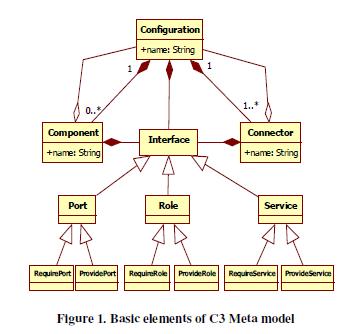BinderPool — Andorid端的“服务发现治理工具”
导语
最近在学习微服务相关知识,突然想到:微服务的思想虽然是在server端的场景下提出来的,但是无论是server,还是移动端,思想是相通的,移动端也会有多服务的场景,就同样面临多服务需要整合治理的问题。
1. 背景
随着公司业务的发展,项目规模会越来越大,可能会遇到多多服务IPC的场景,有很多模块,而每一个模块都需要和服务端通讯,那么我们也要为每一个模块创建特定的AIDL文件,那么服务端service也会产生很多个。作为四大组件之一,过多使用也会造成性能资源消耗。所以我们可以设计只有一个Service,对于不同可客户端我们只是去返回一个不同的Binder即可,这样就避免了创建了大量的Service。
2. AIDL
模拟Binder连接池, 使用两个简单的AIDL接口与实现, 一个是加解密, 一个是加法。
package com.mantoudev.binderpooldemo;
interface ISecurityCenter {
String encrypt(String content);
String decrypt(String pwd);
}加密和解密的实现, 这里使用简单的异或运算处理。
public class SecurityCenterImpl extends ISecurityCenter.Stub {
private static final char CODE_SECRET = 'z';
@Override public String encrypt(String content) throws RemoteException {
char[] chars = content.toCharArray();
for (int i = 0; i < chars.length; i++) {
chars[i] ^= CODE_SECRET;
}
return new String(chars);
}
@Override public String decrypt(String password) throws RemoteException {
return encrypt(password);
}
}
求和的AIDL接口:
package com.mantoudev.binderpooldemo;
interface ICompute {
int add(int a, int b);
}求和的实现:
public class ComputeImpl extends ICompute.Stub {
@Override public int add(int a, int b) throws RemoteException {
return a + b;
}
}Binder连接池通过ID查找Bidner, 查询并返回匹配的Binder:
package com.mantoudev.binderpooldemo;
interface IBinderPool {
IBinder queryBinder(int binderCode);
}3. Binder 连接池
Service服务通过Binder连接池动态选择Binder请求:
private Binder mBinderPool = new BinderPool.BinderPoolImpl();
@Override public IBinder onBind(Intent intent) {
Log.e(TAG, "onBind");
return mBinderPool;
}Binder连接池的具体实现, 创建BinderPool单例, 连接服务:
private BinderPool(Context context) {
mContext = context.getApplicationContext();
connectBinderPoolService(); // 连接服务
}
public static BinderPool getInstance(Context context) {
if (sInstance == null) {
synchronized (BinderPool.class) {
if (sInstance == null) {
sInstance = new BinderPool(context);
}
}
}
return sInstance;
}
绑定服务, 通过CountDownLatch类, 把异步操作转换为同步操作, 防止绑定冲突,对通过CountDownLatch类不了解的请自行百度:
private synchronized void connectBinderPoolService() {
mCountDownLatch = new CountDownLatch(1); // 只保持一个绑定服务
Intent service = new Intent(mContext, BinderPoolService.class);
mContext.bindService(service, mBinderPoolConnection, Context.BIND_AUTO_CREATE);
try {
mCountDownLatch.await();
} catch (InterruptedException e) {
e.printStackTrace();
}
}
通过DeathRecipient处理Binder连接池死亡重联机制:
很多人喜欢在servierConnection的onServiceDisconnected()回调中做重连处理,这里我简单介绍下DeathRecipient
DeathRecipient
Binder有可以让对端的进程得到意外退出通知的机制:Link-To-Death。我这里以我们这里Service被通知Client意外退出的情况为例,实现的方法如下:
Client传递一个Binder对象给Service,此Binder对象与Client的进程关联;
在Sevice中接受到这个Binder对象,并且使用binder.linkToDeath(),注册一个DeathRecipient回调;
实现DeathRecipient。当Client意外退出的时候,DeathRecipient.binderDied()将被回调,我们可以在这里释放相关的资源。
// 失效重联机制, 当Binder死亡时, 重新连接
private IBinder.DeathRecipient mDeathRecipient = new IBinder.DeathRecipient() {
@Override public void binderDied() {
Log.e(TAG, "binderDied@DeathRecipient()");
mBinderPool.asBinder().unlinkToDeath(mDeathRecipient, 0);
mBinderPool = null;
connectBinderPoolService();
}
};
// Binder的服务连接
private ServiceConnection mBinderPoolConnection = new ServiceConnection() {
@Override public void onServiceConnected(ComponentName name, IBinder service) {
Log.e(TAG, "onServiceConnected@ServiceConnection()");
mBinderPool = IBinderPool.Stub.asInterface(service);
try {
mBinderPool.asBinder().linkToDeath(mDeathRecipient, 0);
} catch (RemoteException e) {
e.printStackTrace();
}
mCountDownLatch.countDown();
}
@Override public void onServiceDisconnected(ComponentName name) {
Log.e(TAG, "onServiceDisconnected@ServiceConnection()");
}
};通过ID连接不同的Binder请求.
public IBinder queryBinder(int binderCode) {
Log.e(TAG, "queryBinder---BinderCode:" + binderCode );
IBinder binder = null;
try {
if (mBinderPool != null) {
binder = mBinderPool.queryBinder(binderCode);
}
} catch (RemoteException e) {
e.printStackTrace();
}
return binder;
}Binder连接池AIDL的具体实现, 通过ID选择Binder.
public static class BinderPoolImpl extends IBinderPool.Stub {
public BinderPoolImpl() {
super();
}
@Override public IBinder queryBinder(int binderCode) throws RemoteException {
IBinder binder = null;
switch (binderCode) {
case BINDER_COMPUTE:
binder = new ComputeImpl();
break;
case BINDER_SECURITY_CENTER:
binder = new SecurityCenterImpl();
break;
default:
break;
}
return binder;
}
}
1.4 Binder客户端
我们在子线程进行耗时操作:
//测试
private void doTest(){
new Thread(new Runnable() {
@Override public void run(){
encryptTest();
}
}).start();
}
private void encryptTest() {
BinderPool binderPool = BinderPool.getInstance(getApplicationContext());
IBinder securityBinder = binderPool.queryBinder(BinderPool.BINDER_SECURITY_CENTER);
mISecurityCenter = SecurityCenterImpl.asInterface(securityBinder);
String msg = "BinderPool Test Msg!~~~";
try {
String encryptMsg = mISecurityCenter.encrypt(msg);
Log.e(TAG, "加密了: " + encryptMsg);
String decryptMsg = mISecurityCenter.decrypt(encryptMsg);
Log.e(TAG, "解密了: " + decryptMsg);
Message hm = new Message();
hm.what = 0;
hm.obj = encryptMsg + "\n" + decryptMsg;
mHandler.sendMessage(hm);
} catch (RemoteException e) {
e.printStackTrace();
}
}
1.5 总结
使用BinderPool我们就只需要建立一个Service就足够了。当我们添加一个AIDL接口的时候只需要在BinderPool中添加一个id,然后根据这个id,在BinderPoolImpl中创建一个对应的Binder对象即可。这样就很大程度上简化了我们的工作,同时也节省了系统资源开销,要知道,在移动端,资源、性能的要求要做到更高。







